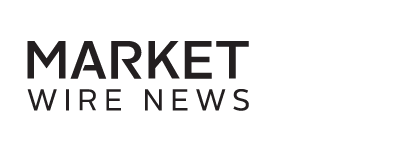2023-05-04 04:43:07 ET
Summary
- Shift of the deposit mix away from non-interest-bearing deposits will hurt the margin, and consequently the earnings.
- The risk level is high because of Hanmi’s location, exposure to office properties, and large balance of uninsured deposits.
- HAFC is currently offering a very high dividend yield of 6.9%. The dividend appears secure because the implied payout ratio is below average.
Earnings of Hanmi Financial Corporation (HAFC) will most probably dip this year due to pressure on the net interest margin amid continued migration of deposits from non-interest-bearing accounts towards high-rate accounts. I’m expecting the company to report earnings of $2.81 per share for 2023, down 15% year-over-year. Compared to my last report on the company, I’ve reduced my earnings estimate because I’ve decreased both my loan balance and margin estimates. The company’s risk level is very high. As a result, I’m downgrading Hanmi Financial to a hold rating despite the attractive dividend yield and price upside.
Deposit Mix Deterioration to Reduce the Margin
Hanmi Financial’s net interest margin slipped by 39 basis points in the first quarter of 2023 as the deposit mix shifted away from non-interest-bearing accounts towards higher-rate accounts, leading to a surge in deposit costs.
SEC Filings
Further mix deterioration cannot be ruled out because every time rates rise, they increase the incentive for depositors to do the paperwork and chase yields. I’m expecting the fed funds rate to increase by a further 25 basis points in June. Further, the proportion of non-interest-bearing deposits in total deposits has been lower in the past. After the first quarter’s dip, non-interest-bearing deposits were 37.6% of total deposits, which is still higher than the ratio of 29.6% at the December 2019. Therefore, the proportion of non-interest-bearing deposits could easily be lower.
I’m expecting the mix to worsen slightly in the next two quarters. Considering these factors, I’m expecting the margin to slip by four basis points in each of the second and third quarters before stabilizing. Compared to my last report on the company, I’ve reduced my margin estimate partially because of the first quarter’s disappointing performance. Further, my outlook for the deposit mix is now worse than before.
Loan Growth to Counter a Softer Margin
Loan growth will likely partly compensate for the weakness in margin. Firstly, the growth momentum and robust pipelines will boost loan growth. The pipeline was stronger going into the second quarter of 2023 than the first quarter, as mentioned in the conference call . However, the management intends to focus on pricing and be selective with its lending; therefore, a stronger pipeline will not necessarily translate to higher loan growth.
Another positive factor is that Hanmi Financial does not appear to be facing troubles in attracting deposits, despite the run on banks in the company’s Californian markets. The banks that failed due to the deposit run are First Republic ( FRC ) and SVB Financial ( OTC:SIVBQ ). Hanmi’s deposit growth actually outpaced loan growth in the first quarter, which proves its good relationships with its customers. Therefore, I’m expecting the easy fund availability to be conducive for loan growth in the year ahead.
On the other hand, the high-rate environment will restrict loan growth. New loans carried a rate of 7.19% on average during the first quarter, as mentioned in the presentation . This rate is too high and will most probably discourage potential customers from borrowing.
Overall, I’m expecting the loan portfolio to grow by 4.0% and the deposit book to grow by 4.4% in 2023. Compared to my last report on the company, I’ve reduced my loan growth estimate because of the first quarter’s disappointing performance. Further, my outlook is now worse than before. The following table shows my balance sheet estimates.
| Financial Position | FY18 | FY19 | FY20 | FY21 | FY22 | FY23E |
| Net Loans | 4,569 | 4,549 | 4,790 | 5,079 | 5,896 | 6,133 |
| Growth of Net Loans | 6.9% | (0.4)% | 5.3% | 6.0% | 16.1% | 4.0% |
| Other Earning Assets | 601 | 657 | 762 | 924 | 862 | 902 |
| Deposits | 4,747 | 4,699 | 5,275 | 5,786 | 6,168 | 6,436 |
| Borrowings and Sub-Debt | 173 | 208 | 269 | 353 | 479 | 490 |
| Common Equity | 553 | 563 | 577 | 643 | 638 | 703 |
| Book Value Per Share ($) | 17.2 | 18.3 | 19.1 | 21.1 | 21.0 | 23.0 |
| Tangible BVPS ($) | 16.9 | 17.9 | 18.7 | 20.7 | 20.6 | 22.6 |
| Source: SEC Filings, Author's Estimates (In USD million unless otherwise specified) |
Reducing the Earnings Estimate
Earnings of Hanmi Financial will most probably dip this year because of a decline in the margin. Further, the operating expenses will be higher this year due to inflation. Moreover, the provision for expected loan losses will approach a normal level this year after remaining subdued last year. Overall, I’m expecting the company to report earnings of $2.81 per share for 2023, down 15% year-over-year.
In my last report, I projected earnings of $3.29 per share for 2023. I’ve slashed my earnings estimate because I’ve reduced both my loan balance and margin estimates.
The following table shows my income statement estimates.
| Income Statement | FY18 | FY19 | FY20 | FY21 | FY22 | FY23E |
| Net interest income | 181 | 176 | 181 | 195 | 238 | 231 |
| Provision for loan losses | 4 | 30 | 45 | (24) | 1 | 11 |
| Non-interest income | 25 | 28 | 43 | 40 | 34 | 34 |
| Non-interest expense | 118 | 126 | 119 | 124 | 130 | 135 |
| Net income - Common Sh. | 58 | 33 | 42 | 98 | 101 | 86 |
| EPS - Diluted ($) | 1.81 | 1.06 | 1.39 | 3.22 | 3.32 | 2.81 |
| Source: SEC Filings, Author's Estimates (In USD million unless otherwise specified) |
Risk Factors that Call for Vigilance
Due to the following factors, I’m currently uncomfortable investing in Hanmi Financial.
- Hanmi originated new loans at a high rate of 7.19% during the first quarter of 2023. This rate is so high that it makes me worried that even a little bit of financial stress can push these new borrowers into default.
- The office property loan portfolio made up a sizable 9% of total loans at the end of March 2023, as mentioned in the presentation. Although there is currently no systemic issue in the office property market, this segment is vulnerable because the work-from-home and hybrid-work culture is proving to be more resilient than anticipated during the pandemic.
- Around 69% of the commercial real estate portfolio (which makes up more than half of all loans) is based in California; therefore, Hanmi has significant exposure to that state. All three failed U.S. Banks, First Republic Bank, SVB Financial, and Signature Bank ( OTC:SBNY ) also had big exposures to California. The deposit runs that FRC and SIVBQ suffered from could spread to Hanmi because their markets overlap.
- Unrealized mark-to-market losses on the available-for-sale portfolio amounted to $125 million at the end of December 2022, as mentioned in the 10-K Filing . The March-end figure is not available yet as the 10-Q filing hasn’t been released. To put this number in perspective, $125 million was as large as 20% of total equity at the end of 2022.
- Uninsured deposits made up a hefty 43% of total deposits at the end of December 2022. The March-end figure isn’t available yet. In the worst-case scenario of a deposit run, Hanmi could find itself forced to sell its securities at loss and resort to expensive borrowing in order to meet its obligations to the uninsured depositors.
Dividend Yield Just Short of 7%
Hanmi Financial is offering a hefty dividend yield of 6.9% at the current quarterly dividend rate of $0.25 per share. The dividend appears secure due to the following two reasons.
- The earnings and dividend estimates suggest a payout ratio of 35.6% for 2023, which is below the five-year average of 45%.
- The company’s is more than adequately capitalized. The total capital ratio stood at 14.80% at the end of March 2023, as opposed to the minimum regulatory requirement of 10.50%.
Downgrading to Hold
I’m using the peer average price-to-tangible book (“P/TB”) and price-to-earnings (“P/E”) multiples to value Hanmi Financial. Peers are trading at an average P/TB ratio of 1.09 and an average P/E ratio of 7.1, as shown below.
| HAFC | HTBK | AMAL | CCB | WASH | NFBK | Peer Average | |
| P/E ("ttm") | 4.45 | 6.23 | 5.26 | 9.76 | 6.64 | 7.76 | 7.13 |
| P/E ("fwd") | 5.64 | 6.28 | 5.31 | 8.26 | 9.65 | 10.29 | 7.96 |
| P/B ("ttm") | 0.69 | 0.70 | 0.89 | 1.73 | 0.95 | 0.66 | 0.99 |
| P/TB (current) | 0.68 | 0.98 | 0.91 | 1.74 | 1.11 | 0.69 | 1.09 |
| Source: Seeking Alpha's Peers Page for P/E and P/B, Charting Page for P/TB |
Multiplying the average P/TB multiple with the forecast tangible book value per share of $22.6 gives a target price of $24.6 for the end of 2023. This price target implies a 68.9% upside from the May 3 closing price. The following table shows the sensitivity of the target price to the P/TB ratio.
| P/TB Multiple | 0.89x | 0.99x | 1.09x | 1.19x | 1.29x |
| TBVPS - Dec 2023 ($) | 22.6 | 22.6 | 22.6 | 22.6 | 22.6 |
| Target Price | 20.1 | 22.3 | 24.6 | 26.9 | 29.1 |
| Market Price | 14.6 | 14.6 | 14.6 | 14.6 | 14.6 |
| Upside/(Downside) | 37.8% | 53.4% | 68.9% | 84.5% | 100.0% |
| Source: Author's Estimates |
Multiplying the average P/E multiple with the forecast earnings per share of $2.81 gives a target price of $20.0 for the end of 2023. This price target implies a 37.6% upside from the May 3 closing price. The following table shows the sensitivity of the target price to the P/E ratio.
| P/E Multiple | 5.1x | 6.1x | 7.1x | 8.1x | 9.1x |
| EPS 2023 ($) | 2.81 | 2.81 | 2.81 | 2.81 | 2.81 |
| Target Price ($) | 14.4 | 17.2 | 20.0 | 22.8 | 25.7 |
| Market Price ($) | 14.6 | 14.6 | 14.6 | 14.6 | 14.6 |
| Upside/(Downside) | (1.0)% | 18.3% | 37.6% | 56.9% | 76.2% |
| Source: Author's Estimates |
Equally weighting the target prices from the two valuation methods gives a combined target price of $22.3 , which implies a 53.3% upside from the current market price. Adding the forward dividend yield gives a total expected return of 60.1%.
Despite the high total expected return, I’d rather stay away from the stock for now because of the high-risk level discussed above. In my last report, I adopted a buy rating because of the high upside. Since then, the banking sector landscape has changed and become considerably riskier. As a result, I’ve decided to downgrade Hanmi Financial stock to a hold rating.
For further details see:
Hanmi Financial: Over 6% Dividend Yield, But Risks Are Too High



